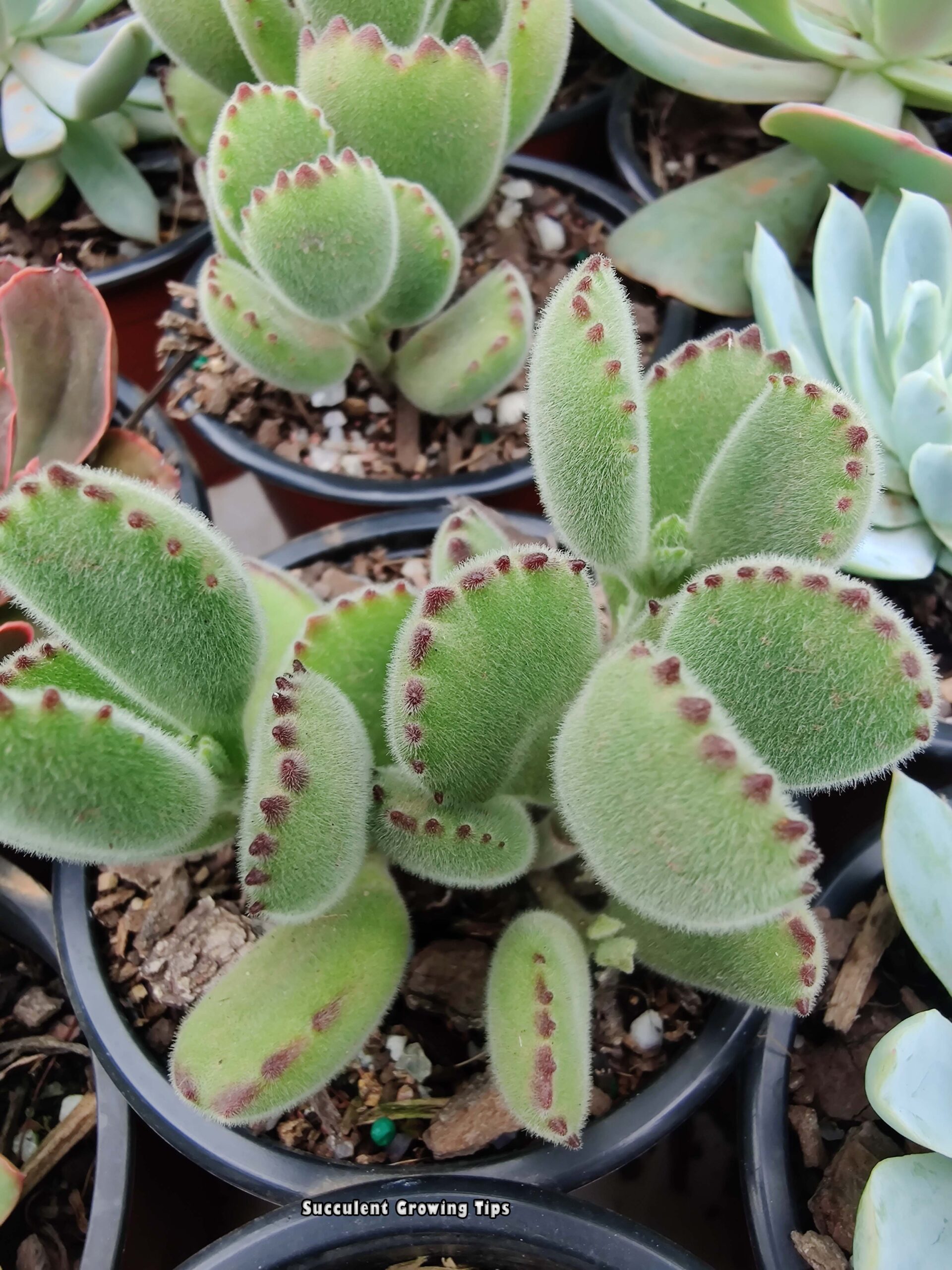Your cart is currently empty!

Cotyledon Tomentosa ‘Bears Paw’ Leaf Propagation & Care Tips
Cotyledon tomentosa is an evergreen succulent plant in the Cotyledon Genus native to South Africa. It is incredibly popular thanks to its chubby leaves and brown tips that resemble a Bear’s Paw.
Cotyledon tomentosa Bear’s Paw succulent is quite an easy plant to propagate from cuttings but incredibly difficult to propagate from a leaf. Leaf propagation is unlikely to be successful but can be done.
To find out the best way to propagate this wonderful plant, skip down to propagation.
Description
The Bear’s Paw Cotyledon grows as a small sized shrub with the main stem branching out. Each stem has opposing leaves that are thick, fleshy and green in colour. Soft white hair cover the plant.
The brown tips, for which the plant is prized, are most prominent in winter and when the plant has sufficient exposure to direct sun. Plants grown in shade are unlikely to have this feature.
Cotyledon Tomentosa can grow to approximately 20-30 cm in height and width, in ideal conditions.
The Bear’s Paw flowers in spring/summer when the plant is mature. The flowers come out on a stalk and are orange- red in colour.
Propagation
Cotyledon Tomentosa is difficult to propagate from leaves. Many succulents have this ability but unfortunately The Bear’s Paw is unlikely to grow a whole new plant out of a leaf. It’s best a section of a stem is present to successfully propagate this plant.
The most reliable and fastest way to propagate Cotyledon tomentosa is by cuttings. We recommend the plant is mature and that there are multiple good sized branches to choose from. The cuttings do not have to be big, but they should have at least 6 leaves. It is best to propagate in spring as the plant is winter dormant. If propagated in the growing season, roots should form in about 3 weeks.
Seed propagation is possible but extremely slow and can take years before the seeds grow into a decent size plant.
Position & Care
Cotyledon tomentosa is a hardy plant that can withstand poor soil and a range of temperatures. It is not frost hardy and is likely to freeze and die if exposed to temperatures below 0 degrees Celsius (32 F).
If grown in a climate where frost and snow is common in winter, this plant should be grown in pots and brought indoors until the danger of frosts passes.
The best position for this plant is full sun however, it can also be grown in part sun and bright shade. As mentioned above, plants in shade are not likely to develop the brown tips, the leaves will be bigger and heavier (the branches may need to be supported as heavy leaves will force the plant down) and overall the plant will be less compact.
Cotyledon tomentosa is suitable to plant in the garden as well as in pots. Pot plants should be kept in afternoon shade during heatwaves over 40 C (104F) as the leaves can burn and the pot may heat up too much, cooking the roots. Plants in the ground should cope with these temperatures as their root system can stay cool.
In warm and humid environments Cotyledon tomentosa is susceptible to fungal disease. If dark coloured spots appear, treat with a fungicide. Never spray or mist this or any other succulent as there is a greater chance of fungus spots and mildew attacking.
For best results, water this plant when the potting mix/soil has dried up. Cotyledon Tomentosa will cope with droughts, but to prevent soil becoming hydrophobic, it should be watered regularly.
Pests
Cotyledon tomentosa is thankfully not a favourite of Aphids and Mealybugs, but mealy bugs can still attack this plant if there is an infestation nearby.
Mealy bugs are also more likely to go into the pots and feed on roots. If the plant is struggling and there are no obvious reasons, check the roots for white spots (mealy bugs).
Caterpillars and snails are also known to feed on the Bears Paw, but again, if there is something better to be had nearby, they will leave the Cotyledon alone.
Toxicity
Cotyledon tomentosa is listed as non- toxic but we have found references that if eaten some pets or humans may develop a mild reaction.
Where Can I Get It
Cotyledon tomentosa is quite an easy succulent to come by these days.
Garden centres and nurseries should also stock this popular plant in most parts of the world. If you’re having trouble finding the Bear’s Paw in brick and mortar shops try online nurseries, Amazon or eBay.